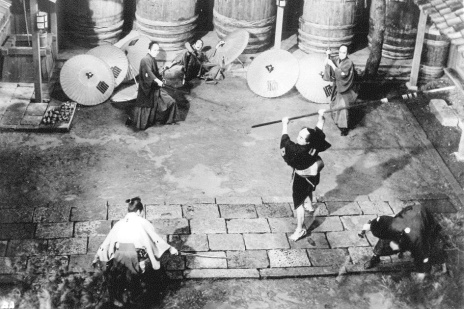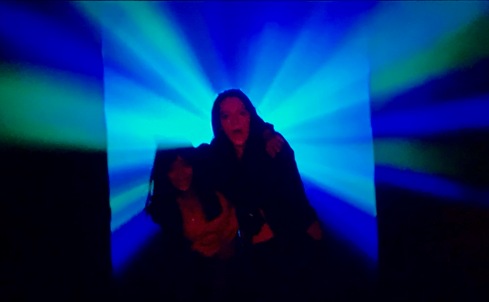 So. Spider-man, we meet again. I have never liked you as a superhero, you are too immature and your Bugs Bunny humor is second rate. But dang it, if Disney isn’t making you an effective little money maker.
So. Spider-man, we meet again. I have never liked you as a superhero, you are too immature and your Bugs Bunny humor is second rate. But dang it, if Disney isn’t making you an effective little money maker.
Okay. First, I have to clear the air. I’ve nursed a 40 year resentment against Spider-man. When I was in second or third grade, my best friend Aaron refused to walk home from school because of Spider-man afternoon cartoons. Instead of dwaddling home with me, Aaron would run as fast as he could up the street so he could catch as much of Spider-man as he could. I didn’t understand it because the cartoon was awful even for 7 year olds AND Aaron was never a fan of superheroes.
Now that THAT is out of the way, SPIDER-MAN INTO THE SPIDER-VERSE is really good. See it!
The animation is innovative and exciting. The competing styles which clash and explode on the screen capture the comic book world at its most inspiring. A visual template where everything is possible. While the plot irreverent enough to admit it makes no sense. And as an origin story of the new Spider-kid, Miles, it is fantastic.
My only real complaint about the movie is that it did not include the Broadway incarnation of Spider-man. I mean if you are going to include freeking Spider-ham, how do you not include the failed Broadway MUSICAL version! Such a clever inclusion would have worked better than making up Spider-noir or whomever it was the Nicolas Cage was voicing.
Seriously, run home right now and watch this cartoon.

 Special Effects / Creature Maker Sôichi Umezawa’s VAMPIRE CLAY is a throw back to the stop motion lunacy of J-body horror. Think TETSUO, THE IRON MAN.
Special Effects / Creature Maker Sôichi Umezawa’s VAMPIRE CLAY is a throw back to the stop motion lunacy of J-body horror. Think TETSUO, THE IRON MAN. Tomu Uchida’s A Bloody Spear of Mount Fuji (Chiyari Fuji, 1955) seeks to subvert the superhero heroics of the Samurai movie. In fact, the Samurai, Sakawa, is not the primary focus of the action, instead his two servants – Genta and Gonpachi are the real leads.
Tomu Uchida’s A Bloody Spear of Mount Fuji (Chiyari Fuji, 1955) seeks to subvert the superhero heroics of the Samurai movie. In fact, the Samurai, Sakawa, is not the primary focus of the action, instead his two servants – Genta and Gonpachi are the real leads. Made for the Halloween market, Gregory Plotkin’s HELL FEST is not a bad movie, nor is it a good one either. It is effective as 89 minutes of distraction.
Made for the Halloween market, Gregory Plotkin’s HELL FEST is not a bad movie, nor is it a good one either. It is effective as 89 minutes of distraction. In my quest to see all the Donald Pleasance movies, I put Ted Kotcheff’s WAKE IN FRIGHT into my Netflix queue and promptly forgot about it. So when it showed up at home, I was confused why I wanted to watch it.
In my quest to see all the Donald Pleasance movies, I put Ted Kotcheff’s WAKE IN FRIGHT into my Netflix queue and promptly forgot about it. So when it showed up at home, I was confused why I wanted to watch it. Fernando Di Leo’s Il poliziotto è marcio (Shoot First, Die Later) is a police thriller that IS about the police, but is NOT very thrilling.
Fernando Di Leo’s Il poliziotto è marcio (Shoot First, Die Later) is a police thriller that IS about the police, but is NOT very thrilling. Colin Minihan’s WHAT KEEPS YOU ALIVE is a tight little suspense flick that manages to pull out a few crafty new tricks to an otherwise beaten, obvious thriller set up.
Colin Minihan’s WHAT KEEPS YOU ALIVE is a tight little suspense flick that manages to pull out a few crafty new tricks to an otherwise beaten, obvious thriller set up. Julius Avery’s OVERLORD cannot make up its mind about whether it is a straight-forward war picture or a horror flick. Unfortunately, it is a better war picture – pulling off subtly and horror of the D-Day invasion’s seemingly impossible mission with some amount of tension. Meanwhile, the horror is overshadowed by silliness and predictability.
Julius Avery’s OVERLORD cannot make up its mind about whether it is a straight-forward war picture or a horror flick. Unfortunately, it is a better war picture – pulling off subtly and horror of the D-Day invasion’s seemingly impossible mission with some amount of tension. Meanwhile, the horror is overshadowed by silliness and predictability. Horror maestro Brian Yuzna’s SOCIETY is a literal and figurative gooey, wet, latex mess. Ostensibly, the movie is a social comment on the difference between the wealthy, power elite and the normal everyday working class people. But not really. Or maybe? I dunno.
Horror maestro Brian Yuzna’s SOCIETY is a literal and figurative gooey, wet, latex mess. Ostensibly, the movie is a social comment on the difference between the wealthy, power elite and the normal everyday working class people. But not really. Or maybe? I dunno. TROUBLE MAN is a sub-par blaxsploitation flick. While is has a great cast and a superior director, Ivan Dixon, it suffers from bad pacing and a stupid story.
TROUBLE MAN is a sub-par blaxsploitation flick. While is has a great cast and a superior director, Ivan Dixon, it suffers from bad pacing and a stupid story.